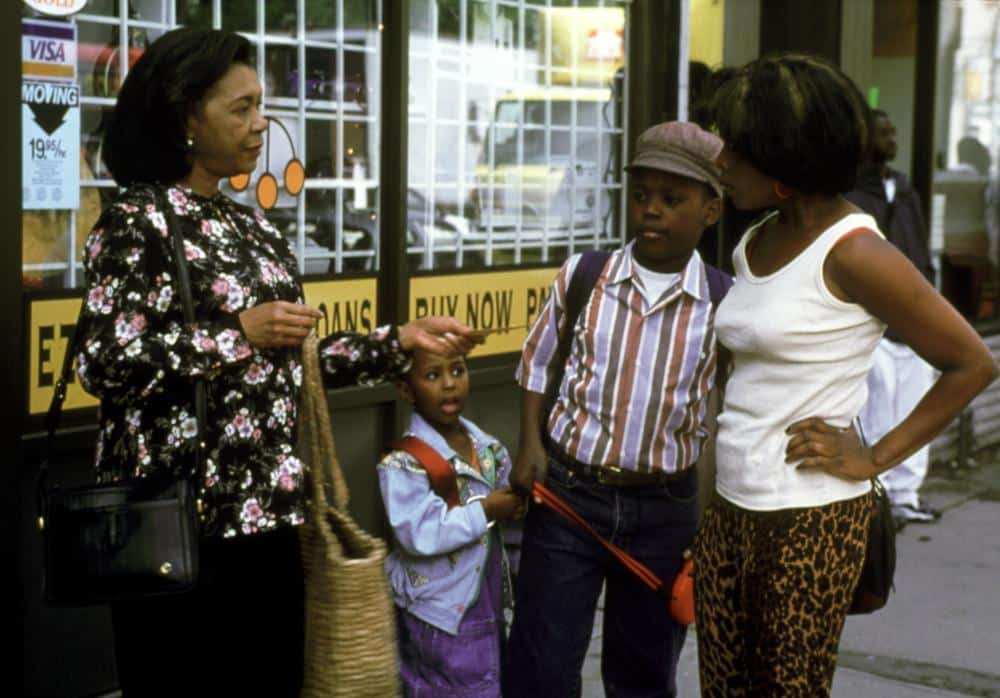Every month, we at The Spool select a Filmmaker of the Month, honoring the life and works of influential auteurs with a singular voice. In honor of Black Women’s History Month, we’re taking the opportunity to put a spotlight on black women behind the camera – directors who broke through systemic barriers to bring their unique perspective to some of cinema’s most intriguing works.
The tree is a potent symbol in Black history. For one, trees were the prime killing instrument of African Americans for at least 200 years. However, there’s also the symbolic imagery of a tree. Family trees—connecting disparate relatives down to the roots have always been a thorny issue for Blacks. Because of slavery, charting one’s past often purports hurdles and dead ends, whether because of auctions or the very nature of tracking ancestors across continents with scant records of their exact origins.
For these reasons, trees, family, and traditions take on different meanings within the Black community. Maya Angelou—famed author and poet of “And Still I Rise” and I Know Why Caged Bird Sings—tackles these themes in her 1998 landmark film Down in the Delta: a simple film filled with heart and joy demonstrating the power of family.
Down in the Delta opens in Chicago’s Cabrini-Green projects, with a family of four: Ms. Rosa (Mary Alice) and her alcoholic daughter Loretta (Alfre Woodard), accompanied by Loretta’s son Thomas (Mpho Koaho) and her autistic daughter Tracy (Kulani Hassen). On the brink of ruin, and maybe death, Ms. Rosa pawns their treasured family heirloom to send Loretta and the children to Mississippi to live with their Uncle Earl (Al Freeman Jr.) and their Alzheimer’s stricken Aunt Annie (Esther Rolle). There, Loretta must get clean and work in her uncle’s “Just Chicken” restaurant to earn enough money to buy the family’s antique back.
Centering around the Sinclairs’ heirloom – a candelabra named Nathan – Down in the Delta observes a family returning to their roots. Nathan, bequeathed to the family’s male heirs since their great-great- grandfather Jessie repossessed it from his former owner’s mantle, expresses “newly” formed traditions to replenish the former heritage Africans were robbed of as slaves. Tellingly, the candelabra arms twist like the branches of a family tree. Also, the Sinclairs now own the White Sinclair’s former plantation Big House, making Down in the Delta an example of Blacks controlling their destinies over their former Whites masters.
Screenwriter Myron Goble’s script often balances multiple threads of cultural and racial history, but it’s not without some weaknesses. The film leans too heavily into the cliche of the evil city vs. the morally pure country. And while Goble inserts Uncle Earl’s son Will (Wesley Snipes) to further demonstrate the estrangement of the Sinclairs, the resulting tangent of the townspeople banding together to buy the chicken plant with Will’s assistance is messy. Furthermore, Loretta easily moving from being an alcoholic surrounded by booze to a dry county without any physical or emotional repercussions furthers the script’s lack of dimension.
Angelou, having appeared in multiple roles as an actress (including Roots), had a massive challenge with Down in the Delta (her only directorial feature credit). When the famed author shot this film, Euzhan Palcy, Kathleen Collins, Julie Dash, and Madeline Anderson were the only other prominent examples of female Black directors. In fact, there were more White men who could recount their experiences on the moon than Black women allowed to present stories about Black women. Angelou taking on the role of director was gutsy, allowing herself to succeed or fail on a national stage (the film originally premiered on Showtime).
There were more White men who could recount their experiences on the moon than Black women allowed to present stories about Black women.
Down in the Delta, at several junctions, naturally elicits joy and liveliness by way of some wonderful performances from its cast. \Rolle (of Good Times fame) as the Alzheimer’s stricken Aunt Annie is a sight of layered torment and glee. Freeman Jr. as the family’s well-meaning patriarch brings a steady and nuanced presence to this troubled film family, especially in scenes where he laments the candelabra’s fate and their family history.
But it’s Woodard who is totally gripping, bringing a wellspring of emotions without contrivance. Her ability to portray an unhinged and dysfunctional mother in the first act, while switching to a delightfully reformed, yet self-conscious woman in the second act is simply stunning. Pulling these performances from up and down a cast would prove a challenge for any director, but Angelou succeeds.
Nevertheless, there are instances where her rudimentary skills as a director are evident. Down in the Delta, initially, struggles due to excessive camerawork. There are pans and whips that are jarring and lack forethought. The film is also dogged by impulsive cutting (such as a full shot of Ms. Rosa sitting, then a close up of Ms. Rosa, then a close-up of her picking up the phone). Angelou sometimes lacks the instincts to allow her talented cast to inhabit the space.
Her decision to include redundant flashbacks, accompanied by voice overs, breaks the cardinal rule of writing: “Show, don’t tell.” Her employment of flashbacks also causes the film to meander and slightly undercuts a poignant conclusion.
Still, Down in the Delta’s ending remains limpid, sincere, and powerful. Knowing the history of African Americans, and the “ease” by which generations of loved ones were separated by slavery, inherently adds a bittersweet and rueful tinge to any film centered around the bonds of family. And when the flashbacks rightfully montage over the film’s final minutes, a reverence washes over us for this family, for Woodard’s stellar performance, and for a first-time Black female director bringing a story of pride as familiar and important to African Americans as the Sinclairs’ priceless heirloom.

